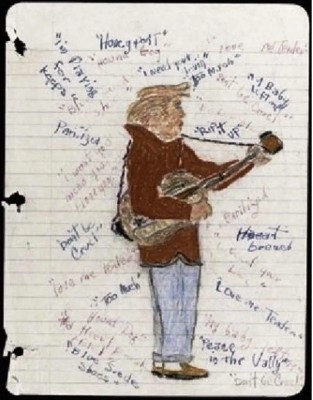Discover the Story of the Iconic Statue of Liberty: A Symbol of Freedom and Friendship
The Statue of Liberty stands tall on Liberty Island in Upper New York Bay, commemorating the enduring friendship between the United States and France. This colossal statue, an emblem of freedom and democracy, attracts millions of visitors each year.
Standing at an impressive 305 feet (93 meters), including its pedestal, the Statue of Liberty features a woman holding a torch in her right hand and a tablet inscribed with the date of the Declaration of Independence (July 4, 1776) in her left. The torch itself, measuring 29 feet (8.8 meters) from the flame tip to the bottom of the handle, can be accessed via a 42-foot (12.8-meter) service ladder inside the arm, though this ascent was only open to the public from 1886 to 1916. Visitors can reach the observation deck in the pedestal by elevator or stairway, and a spiral staircase leads to a panoramic view from the statue’s crown.
The Making of a Masterpiece
The idea for the Statue of Liberty was proposed by French historian Édouard de Laboulaye in 1865, with funds raised by the French people. Renowned sculptor Frédéric-Auguste Bartholdi began work in 1875. The statue was crafted from hammered copper sheets, assembled over a framework designed by engineers Eugène-Emmanuel Viollet-le-Duc and Alexandre-Gustave Eiffel.
In 1877, Bartholdi focused on finishing the head of the Statue of Liberty, which was showcased at the 1878 Paris World's Fair. To support fundraising efforts, models of the statue were sold, and tickets were available for viewing the construction at the Gaget, Gauthier & Co. workshop. The French government also sanctioned a lottery, featuring prizes such as valuable silver plates and a terracotta model of the statue. By late 1879, approximately 250,000 francs had been successfully raised.
The statue's head on exhibit at the Paris World's Fair, 1878
Fundraising in the U.S. for the Statue of Liberty pedestal began in 1882, spearheaded by a committee that organized numerous money-raising events. As part of these efforts, an auction of art and manuscripts was held, and poet Emma Lazarus was asked to contribute an original work. Initially, she declined, saying she could not write a poem about a statue.
However, her involvement with refugees fleeing antisemitic pogroms in Eastern Europe inspired her to write a sonnet expressing empathy for these immigrants. The resulting poem, "The New Colossus," includes the famous lines, "Give me your tired, your poor/Your huddled masses yearning to breathe free," and has become an iconic symbol of the Statue of Liberty, with its inscription displayed in the statue's museum.
Joseph Pulitzer, publisher of the New York World, commemorated the pedestal fundraising with a stained glass window titled "Liberty Enlightening the World." Originally installed in the New York World Building, it is now located in Pulitzer Hall at Columbia University. Despite these efforts, fundraising lagged. In 1884, New York Governor Grover Cleveland vetoed a bill to provide $50,000 for the statue project, and a subsequent attempt to secure $100,000 from Congress also failed. With only $3,000 in the bank, the New York committee suspended work on the pedestal. Other cities, including Boston and Philadelphia, offered to cover the full cost if the statue was relocated to their cities.
In response, Pulitzer launched a drive to raise $100,000 (equivalent to around $3,500,000 in 2024), pledging to print the name of every contributor, regardless of the donation amount. This campaign captured the imagination of New Yorkers. Contributions included "60 cents, the result of self-denial" from "a young girl alone in the world," and "five cents as a poor office boy's mite toward the Pedestal Fund." A group of children sent a dollar as "the money we saved to go to the circus with." Donations also came from a "lonely and very aged woman," residents of a home for alcoholics, drinkers in bars and saloons, and a kindergarten class in Davenport, Iowa, which sent $1.35. The flood of donations allowed the committee to resume work on the pedestal.
While France raised about $250,000 to build the statue, the United States needed to raise up to $300,000 for the pedestal.
At the entrance of the pedestal, a plaque bears the sonnet "The New Colossus" (1883) by Emma Lazarus, which helped raise funds for the pedestal. The powerful words read:
Not like the brazen giant of Greek fame,With conquering limbs astride from land to land;
Here at our sea-washed, sunset gates shall stand
A mighty woman with a torch, whose flame
Is the imprisoned lightning, and her name
Mother of Exiles. From her beacon-hand
Glows world-wide welcome; her mild eyes command
The air-bridged harbor that twin cities frame.
“Keep, ancient lands, your storied pomp!” cries she
With silent lips. “Give me your tired, your poor,
Your huddled masses yearning to breathe free,
The wretched refuse of your teeming shore.
Send these, the homeless, tempest-tost to me,
I lift my lamp beside the golden door!”
On July 4, 1884, the completed statue was presented to American minister Levi Morton in Paris. After being disassembled, it was shipped to New York City in 1885. The pedestal, designed by American architect Richard Morris Hunt, was constructed within Fort Wood on Bedloe’s Island. President Grover Cleveland dedicated the statue on October 28, 1886.
Unveiling of the Statue of Liberty Enlightening the World (1886) by Edward Moran. Oil on canvas. The J. Clarence Davies Collection, Museum of the City of New York.
Initially administered by the U.S. Lighthouse Board due to its illuminated torch, the statue was later managed by the War Department in 1901. In 1924, it was declared a national monument, and administration transferred to the National Park Service in 1933. Bedloe’s Island was renamed Liberty Island in 1956, and nearby Ellis Island was added to the monument's jurisdiction in 1965, bringing the total area to about 58 acres (24 hectares).
The torch underwent several modifications, including an electrification in 1916 and a redesign with repoussé copper and gold leaf in the mid-1980s.
Original Statue of Liberty torch, New York, NY. Photo © David Sundberg / Esto.
The statue was restored for its centennial celebration in July 1986. In 1984, the Statue of Liberty was added to UNESCO’s World Heritage List.
July 4, 1986: First Lady Nancy Reagan (in red) reopens the statue to the public.
Today, the Statue of Liberty continues to stand as a powerful symbol of freedom and hope. The adjacent Statue of Liberty Museum, opened in 2018, houses exhibits on the statue's history, including the original 1886 torch. A visit to this iconic monument offers a unique glimpse into the rich heritage and enduring values of the United States.
Get Free Gifts & Best Stories!
Join our newsletter to get our top stories of the month and free merch.
- 📚 Cool Stories: Read stories you won’t find in textbooks.
- 🎁 Free Gifts: Get exclusive stickers, t-shirts, and more!
Only 1 email a month. No spam, we promise!

